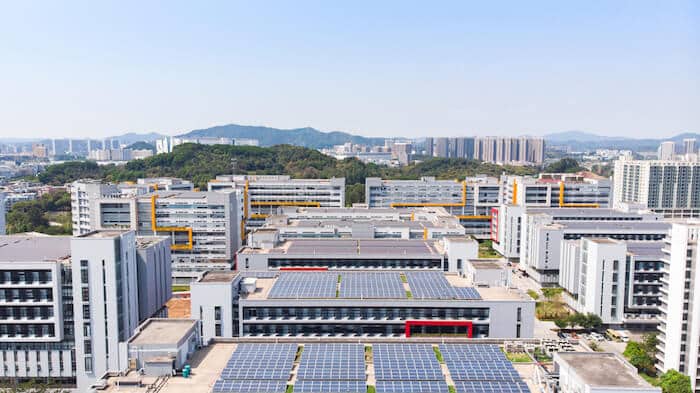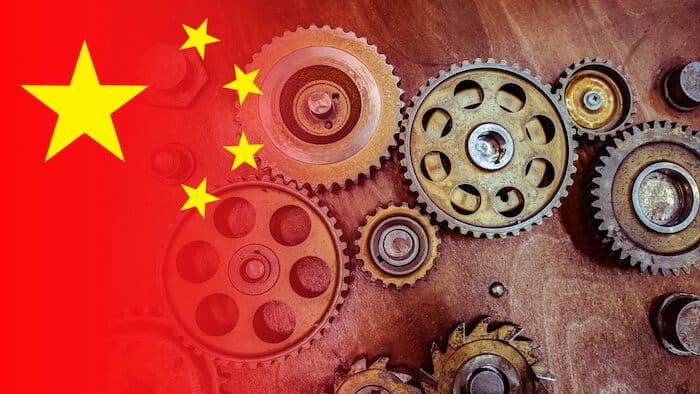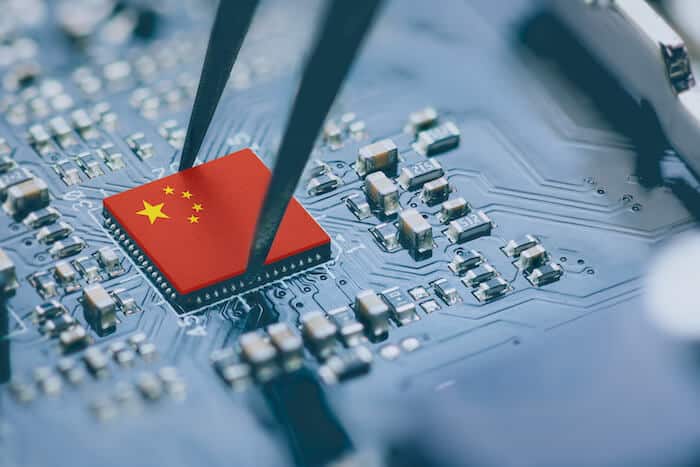Contract manufacturing in China has become increasingly popular.
This option suits large organizations that don’t want to own factories or invest in capital equipment and smaller companies where building production facilities isn’t feasible. Beyond the cost savings, using a Chinese contract manufacturer allows firms to focus their efforts on product innovation, sales, and marketing.
Outsourcing to a contract manufacturer can be a smart move for a large company with significant volume, good leverage, and relatively mature products.
But for smaller companies early in their product development cycle, they risk limiting options too soon. Once you select a contract manufacturer, you are bound to their factories and equipment and stuck with their pricing and terms. You will have little leverage to negotiate with smaller volumes than the bigger companies.
While China is the most popular country to produce products, doing 28.7% of global manufacturing in 2019, contract manufacturing in China is not for everyone. You can still source from China or other overseas manufacturing hubs, even if you don’t go directly to a contract manufacturer.
In this article, we’ll look at the steps to take before sourcing a manufacturing partner, the types of partners available in China, and some suggestions for sourcing a Chinese factory. We’ll go further into the process and examine what to do during production.
Then we’ll consider how to leverage a managed marketplace model as an alternative to finding the right partner for your company and product.
Steps to Take Before Sourcing Contract Manufacturing in China
You should complete a few critical steps before you source a manufacturer in China as your supplier. These steps are a fundamental part of the product development process.
Research
Research is critical before you begin creating any product. Product development, no matter how you approach it, is an investment in both time and money. Making sure you are going after the right product opportunity is essential, especially for smaller companies with limited budgets that cannot afford to make the wrong bet.
By investing time in the research phase, you will know if you are developing the right products at the right time. You’ll identify your customers, what they want, and any opportunity to fill a niche that the competition has ignored or isn’t doing well. You’ll discover possibilities to build market share, improve an existing product, or create a new product from scratch that meets or creates demand. You will also capture and document the capabilities and features needed in your product.
Research includes market research, competitive analysis, trend tracking, keyword search, margin and profitability calculations, and finding the right people to partner with to bring your product to life.
Product Design
Product design is where the rubber hits the road — your product ideas go from concept to actual designs. Whether you design in-house or partner with a team of experts, you need to work with industrial designers and various engineers who know how to turn what you learned in research into a viable product design.
The exact design deliverables will vary depending on the type of product you are creating but typically includes sketches, CAD models, detail drawing, 2D rendering, prototypes, and a bill of materials. You will also identify and document your intellectual property at this point.
The more complete your product design, the easier your manufacturing process and the better chance your Chinese manufacturer will produce the product you developed.
Product Definition and Specifications
Whichever manufacturer you choose, they’ll need your final design files with precise dimensions and tolerances clearly defined. Like architectural blueprints help builders, this information will help your manufacturer understand exactly what you want so that they can accurately price, source, and build a product that meets your specifications.
These documents are also what you will inspect against once your product is made. And, if the product doesn’t match the definition and specifications, you have the evidence you need to have your contract manufacturer fix it.
Types of Chinese Factories
Raw material factory: This factory produces the basic materials you will need for your product. These parts are then sent to one of the other factory types.
Component factory: This factory will produce discrete parts, or components, that are needed to make your final product, often incorporating the output of what your raw material factory produced.
Assembly factory: This factory is the one that will take all of the materials and components from the other factories to put together your final product that is ready for market.

Sometimes, you can find contract manufacturing companies that are a combination of all three types of factories, but usually, you need to develop a supply chain that includes all three. That is why knowing what you need is so important.
You can also classify Chinese suppliers by the production processes they offer. Services like plastic injection molding, CNC machining, electronics assembly, and packaging must align with your specifications. The diversity of manufacturing services a given supplier offers can make a big difference in finding a low-cost solution with good product quality.
Sourcing a Chinese Factory
Many companies, e-commerce businesses, and entrepreneurs who use the internet or sourcing agents quickly realize they made a bad choice. It is common to discover that a sourcing agent is in cahoots with factories. And, whatever you do, don’t respond to someone on social media who wants to be your production partner.

Unless someone on your staff has experience manufacturing in China and local contacts, make sure you partner with someone that does. They may be U.S.-based or in China. But either way, they need to know the culture and have relationships with companies up and down the supply chain.
Here are nine suggestions for sourcing a contract manufacturer in China:
- Have a complete and accurate product definition.
- Ask detailed questions about their capabilities and experience and ask to see examples of how they used those capabilities on real products.
- Ask about their supply chain, how much they do in-house and how much they contract out.
- Get multiple quotes.
- Do due diligence on the factory, assessing quality systems, available manufacturing processes, and their supply chain.
- Ask for specific examples of full products they have made in the past that are similar to yours.
- Ask for references and contact them.
- Investigate how they handle intellectual property rights.
- Request copies of their business license and any certification they have in place.
Take your time and be forceful in asking questions and requesting answers. Visit the factory or have your local representative visit and get back to you. Once you have chosen someone as a production partner, negotiate with them on cost, schedule, and quality. And don’t be too greedy. Work towards a mutually beneficial relationship, not one where you try to take advantage of them.
Understanding the Chinese Culture
Keep in mind that doing business in China is different than in the United States. There will be a language barrier and cultural differences, making it essential to have a local representative who understands both. This person will be your eyes and ears on the ground, helping you build a good relationship with your factory partners.
Your liaison will know what you expect and should ensure those expectations are met. Since COVID-19 has made international travel challenging, it is even more important to have feet on the street wherever you manufacture your product, making sure it is produced correctly.
Navigating Production Costs and Labor in China
Navigating production costs and labor in China can be challenging, but understanding the key factors will help you make informed decisions. This section will explore the elements affecting production costs, labor costs, and minimum wages, and the impact of economic factors on your manufacturing process.
Factors Affecting Production Costs
Understanding the various factors affecting production costs in China is crucial for optimizing your expenses. These costs include materials cost, labor cost, and overhead cost. By analyzing the production cost breakdown, you can identify areas where cost efficiency can be improved.
It’s essential to consider all aspects of manufacturing expenses to develop cost reduction strategies that will enhance your overall production efficiency.
Labor Costs and Minimum Wages
Labor costs are a significant component of production costs in China.
These costs vary across different regions due to regional differences in minimum wages. Understanding the hourly minimum wage in the area where your factory operates is vital. Wage comparison between different regions can help you choose a location that balances cost and labor quality. Keeping an eye on wage trends is crucial as they directly impact your labor cost and overall production budget.
Cost of Living and Economic Factors
The cost of living in China influences labor costs and, consequently, your production costs. Economic trends play a crucial role in determining the long-term viability of your manufacturing partnerships.
Considering economic factors such as living expenses and regional economics can help you assess the economic impact on your manufacturing process. Developing long-term partnerships with an understanding of these factors will ensure stability and cost-effectiveness in your production operations.
Quality Control and Compliance in Chinese Manufacturing
Quality control and compliance are critical when manufacturing in China. Ensuring your products meet high standards requires robust inspection protocols and adherence to international standards. This section will cover key quality control measures, how to avoid fake manufacturers, and the importance of compliance with international standards.
Quality Control Measures
Implementing inspection protocols ensures that each product meets specified standards before leaving the factory. One of the most recognized standards is ISO 9001, which outlines the criteria for a quality management system.
Adhering to ISO 9001 helps ensure products consistently meet customer and regulatory requirements. Regular inspections and quality control checks are vital to identifying defects early in the production process, minimizing waste and ensuring that only high-quality products reach the market. Inspection standards and protocols must be rigorously followed to maintain high production quality.
Quality management involves setting defect rates that are acceptable and monitoring these rates continuously. By having robust quality control measures in place, you can build trust with your customers and safeguard your brand’s reputation.
Avoiding Fake Manufacturers
When sourcing in China, it’s essential to avoid fake manufacturers.
Identifying genuine suppliers is crucial to ensure the reliability of your supply chain. Look for red flags during the vetting process, such as inconsistent communication or unverifiable business details. Supplier verification should involve thorough background checks and assessments to confirm the legitimacy and capabilities of the supplier.
Compliance with International Standards
Compliance with international standards is non-negotiable for successful manufacturing in China.
Understanding and meeting compliance requirements for different markets is crucial. This includes adhering to product standards, regulatory compliance, and obtaining necessary certifications. International standards ensure that your products can be sold and distributed globally without legal issues.
Managing compliance effectively involves keeping up-to-date with changes in regulations and ensuring all products meet the required standards before shipping. This proactive approach to compliance management helps avoid costly delays and potential fines, ensuring a smooth entry into international markets.
Managing Contract Manufacturing in China
When you are happy with the samples, it’s time for mass production and quality control. Again, having a consistent, local presence to oversee production and conduct quality control is highly beneficial. Included with that is monitoring the Accepted Quality Limit (AQL), the internationally agreed-upon standard for the allowable number of defective products in each product run.

Stay in touch with the factory and ask for regular updates on throughput, supply chain, scrap, and what they are warehousing.
Compliance, Import, and Logistics
Finally, once your product is produced and packed, you’re ready to bring your product to the U.S. Here, you’ll also want an expert in your corner to ensure your product arrives safely and on time at your warehouse, avoiding any delays in shipping or customs.
On the compliance side, you must follow product standards, substance regulations, labeling requirements, testing requirements, tariffs, and documentation requirements. Next, you will work with an international freight shipping company to get your product to your distribution point.
A Word About the Managed Marketplace Model
A new model represents a powerful alternative to the traditional contract manufacturing approach:
The managed marketplace model.
This model brings a complete solution to companies that don’t have deep product development or supply chain expertise. It allows companies to maintain flexibility and control while still outsourcing critical steps with trust and confidence.
Instead of trying to learn as you go, which can be a frustrating and expensive path, you partner with a company like Gembah to help you with product development, research, contract manufacturing in China, and logistics.
From a design perspective, the managed marketplace model can help you find the ideal designers and engineers for your specific product instead of being limited to only the designers working for the contract manufacturer. Your designer should have experience designing products in your product category, bringing fresh insights and saving time with revisions so you can begin production much faster.
Regarding the supply chain, the managed marketplace gives you flexibility in finding the best factory anywhere from around the world with the ability to switch factories if needed. Sourcing factories is a critical aspect of the production process. It takes skill in negotiating a good deal and overseeing production to ensure the contract manufacturer in China is doing exactly what they promised. Few small companies have this expertise or the local-level staff to develop a personal relationship with the manufacturer and manage production.
Start Your Journey With Experts
As you can see, the product development process is lengthy and complex, even more so when dealing with contract manufacturing in China.If you want to minimize your risk and maximize your bottom line, having experts from Gembah manage the entire process may be the right move for your company. The best way to find out is to contact us and discuss what you want to accomplish in your product development journey.



